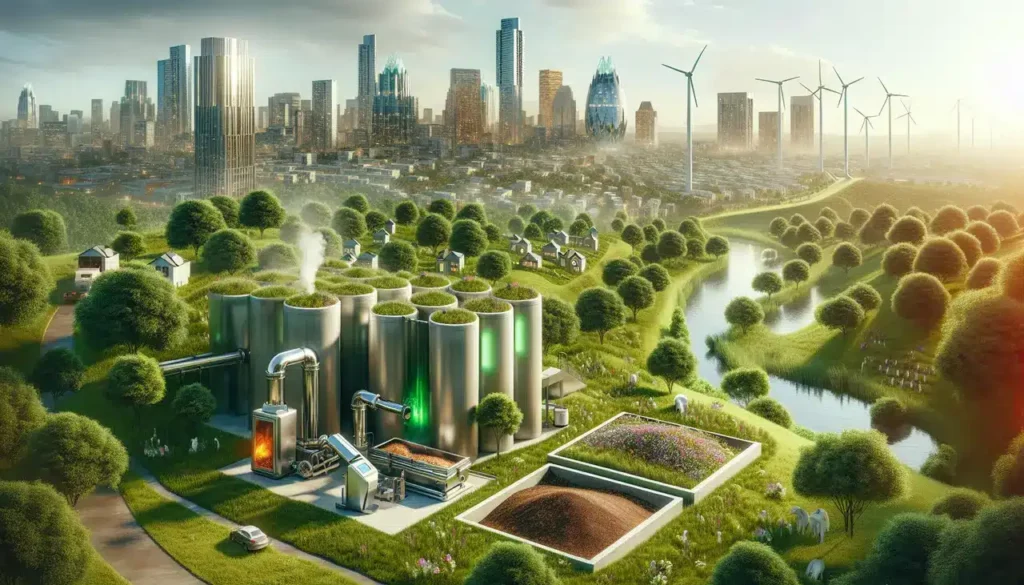Introduction to Austin’s Green Movement
Austin is diving headfirst into the green movement, and it’s not just about recycling or driving electric cars. This city’s green heart beats strong for something called organic cremation, a method that’s all about giving back to the earth in the most environmentally friendly way possible. Imagine instead of the traditional way we say goodbye to our loved ones, there’s a method that uses nature and science to return them gently to the earth. That’s what’s catching on here, driven by a community that values sustainability and eco-conscious living. It’s a bold step forward in the conversation about how we handle life’s most delicate matter — death — with dignity and respect for our planet.
What is Organic Cremation?
Organic cremation, also known as water cremation or alkaline hydrolysis, is a green alternative to traditional flame-based cremation. In simple terms, it uses water and alkali to speed up the natural decomposition process, breaking down a body into its chemical components. Unlike traditional cremation that releases carbon dioxide into the atmosphere, organic cremation is environmentally friendly. The process results in a sterile liquid and bone ash which can be returned to the earth or given to loved ones, just like ashes from a conventional cremation. It’s a nod to those who lived green lives, allowing them to leave the world in a way that aligns with their values. Organic cremation uses less energy and produces fewer carbon emissions, making it a choice that looks after our planet even in death.
The Environmental Benefits of Organic Cremation
Organic cremation, also known as bio-cremation or green cremation, is a game changer for the environment. Why? First off, it uses significantly less energy than traditional cremation. Picture this: standard cremation fires up massive amounts of natural gas and releases carbon dioxide into the air. Organic cremation, on the other hand, uses a chemical process that doesn’t just cut down on carbon emissions but also preserves a bit more respect for the land. Here’s the kicker – it uses 90% less energy. That’s a massive win for the planet.
Next, think about all the nasty stuff that doesn’t get released into the air. Traditional methods can let off mercury from dental fillings, for example. Organic cremation? None of that. It’s clean, meaning it’s not just better for the earth but for our air quality too.
And it doesn’t stop there. With organic cremation, you’re left with a powder that can be returned to the earth, nourishing it, rather than taking up space in a cemetery. This method acts almost like a reset button, giving back to nature instead of constantly taking from it.
In short, swapping to organic cremation means we’re reducing harmful emissions, saving energy, and avoiding burying materials that don’t break down. It’s a solid step forward in the green movement, showing it’s possible to honor our loved ones and our planet at the same time.
How Austin is Leading the Organic Cremation Trend
Austin is at the forefront of a significant shift towards sustainable after-life care with organic cremation, a method that’s gaining traction for its eco-friendly approach. This city has embraced the green movement wholeheartedly, reflecting its residents’ values of environmental stewardship and innovation. Organic cremation, also known as water cremation or alkaline hydrolysis, uses water and alkaline chemicals to break down the body into its chemical components, leaving behind only bones and a sterile liquid. Unlike traditional cremation, which burns fossil fuels and releases carbon dioxide into the atmosphere, organic cremation has a much lower carbon footprint.
Austin’s funeral homes that offer organic cremation are not just responding to a trend; they’re setting a new standard for end-of-life services. By choosing organic cremation, Austinites are reducing their environmental impact, even in death. This method uses over 90% less energy than traditional cremation and doesn’t emit harmful gases into the atmosphere. It’s a choice that aligns with the city’s broader goals of sustainability and conservation.
The embrace of organic cremation in Austin reflects a deeper cultural shift towards environmentally responsible practices in all aspects of life. It’s a powerful statement of the community’s commitment to protecting the planet for future generations. As more people become aware of the environmental benefits of organic cremation, Austin’s role in popularizing this method is likely to influence other cities, potentially leading to a wider adoption of greener after-life care options across the country.
The Process of Organic Cremation Explained
Organic cremation, also known as water cremation or aquamation, is a green alternative to the traditional fire-based method. It involves a process called alkaline hydrolysis, where the body is placed in a solution of water and potassium hydroxide. This mix is then heated, but not boiled, at a high pressure, which speeds up the natural decomposition process that would otherwise take years in the soil. In about 3 to 4 hours, the body is broken down to its basic components, leaving behind only bones and a sterile liquid. The bones are then dried and ground into a fine white powder, similar to ash produced in traditional cremation, and returned to the family. The remaining liquid, containing amino acids, sugars, nutrients, and salts, is safe and can be returned to the ecosystem without harming the environment. This process uses about 90% less energy than fire-based cremation and doesn’t release harmful emissions into the atmosphere, making it a win for both the planet and the families who choose it.
Comparing Traditional and Organic Cremation Methods
When it comes to the end of life, people are starting to think green, including how they want their remains handled. Traditional cremation uses intense heat and flame, reducing the body to ashes in a couple of hours. It’s fast but not too kind to the planet, releasing carbon emissions and using a ton of energy. On the flip side, organic or green cremation, known scientifically as alkaline hydrolysis, is making waves for being eco-friendly. It uses a mixture of water and potassium hydroxide to break down the body, resulting in a process that emits about a quarter of the carbon dioxide compared to traditional methods and uses significantly less energy. Plus, this method doesn’t release mercury into the atmosphere, which can happen when dental fillings get heated during a flame-based cremation. The end product? A small quantity of liquid and pure, white bone ashes, which can be returned to the family, just like with traditional ashes. So, if you’re weighing these options, consider the impact on Earth and what feels right for your farewell. Organic cremation is kinder to the planet, offering a way to leave a lighter footprint even in death.
Local Impact: Austin Families and Organic Cremation
Austin families are leaning hard into the green movement, especially when it comes to organic cremation. This method, also known as water cremation or alkaline hydrolysis, is an eco-friendly alternative to traditional fire-based cremation. It’s gaining traction for a few solid reasons. For starters, it uses less energy and emits significantly fewer carbon emissions, making it a win for our planet. More Austin families are choosing this path as they become aware of their environmental footprints, hoping to leave a healthier Earth for future generations.
The local impact is tangible. Funeral homes in Austin that offer organic cremation are seeing an uptick in inquiries and services. This shift is pushing more funeral services providers to consider adding organic cremation to their offerings, feeding a green cycle of business practices and consumer choice. It’s not just about the individual choice anymore; it’s about a community-wide movement towards sustainability.
This trend in Austin is setting a precedent, showing that a city can indeed influence greener practices through collective action and preference. Families are leading the charge, making environmentally conscious decisions that ripple through the community, inspiring others and validating the city’s green reputation. Choosing organic cremation is a personal yet profound way Austin families are contributing to a big environmental impact, and it’s shaping how the city thinks about death, legacy, and ecological responsibility.
State Regulations and the Future of Organic Cremation in Texas
In Texas, the green movement is pushing the boundaries of traditional funeral practices, making way for environmentally friendlier options like organic cremation, also known as water cremation or alkaline hydrolysis. However, the journey toward widespread acceptance and practice of organic cremation hinges on state regulations which are, to put it mildly, complicated. As it stands, Texas law is warming up to the idea but still has miles to go before organic cremation becomes as common as traditional burial or cremation.
Several key factors impact the future of organic cremation in Texas. First, there’s the need for legislation that not only allows but also regulates the practice ensuring it’s done safely and with respect for the deceased. Texas is methodically stepping into these waters, evaluating the environmental benefits and ethical considerations tied to organic cremation.
This practice promises a reduction in carbon footprint compared to conventional methods, aligning with the green movement’s goals. However, the state’s regulatory environment must catch up with these innovative intentions, offering clear guidelines and support for funeral homes and families interested in this method. The expectation? As awareness grows and demand increases, Texas could see a softening in its stance, potentially leading to more widespread adoption of organic cremation.
Remember, the shift towards green burial practices, including organic cremation, doesn’t just rely on the state’s legal framework. Public opinion and cultural acceptance play huge roles. The more Texans understand and support organic cremation, the more likely regulations will evolve to accommodate this eco-friendly alternative. In essence, the future of organic cremation in Texas is a dance between evolving laws, environmental advocacy, and the ever-changing views of the Texan populace.
How You Can Choose Organic Cremation
Choosing organic cremation, also known as bio-cremation or water cremation, is simpler than you might think. First, find a funeral home that offers this eco-friendly option. Not all do, so it’s key to ask around or do a quick search online. Once you’ve found a place, talk to the funeral director about your interest in organic cremation. They’ll explain the process, which uses water and alkali instead of fire, significantly reducing carbon emissions. Costs vary, but it’s generally on par with traditional cremation, sometimes even less due to lower energy use. Remember, this choice not only reflects your eco-conscious values but also contributes to a healthier planet. It’s a way to embrace the green movement with open arms, even in final decisions.
The Bigger Picture: Organic Cremation’s Role in Sustainable Practices
Organic cremation, also known as water cremation or alkaline hydrolysis, is not just a new way to say goodbye to our loved ones. It’s a step forward in the green movement, especially in Austin, where sustainability is more than a buzzword; it’s a lifestyle. This process uses water and alkaline chemicals to break down the body, leaving behind only the bones, which are then turned into a white powder. It uses significantly less energy than traditional cremation and emits no carbon into the atmosphere. By choosing organic cremation, folks are doing their bit for the planet. It’s a choice that speaks volumes about wanting a cleaner, greener earth. In Austin, where eco-consciousness runs deep, organic cremation is not just a personal choice but a community statement. It’s about saying we care for our city, our planet, and future generations. So, when we talk about organic cremation, we’re not just talking about an alternative funeral service. We’re looking at a bigger picture: a sustainable way of life that honors the earth even in death. In embracing this method, Austin is setting a precedent, showing that it’s possible to take care of our planet in life and in death.







